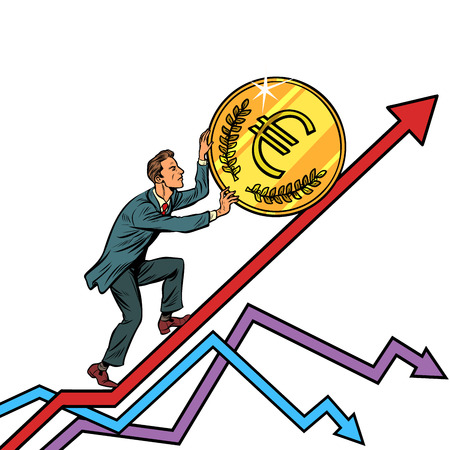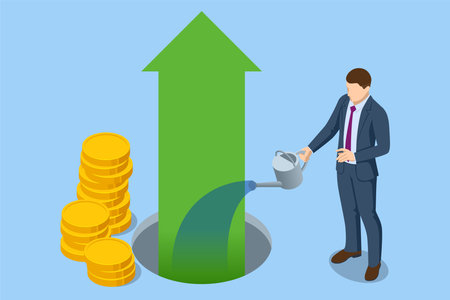Understanding Stock Market Bubbles
Stock market bubbles have always fascinated—and sometimes terrified—everyday investors across America. But what exactly is a bubble, and why do they seem to pop up every decade or so? At its core, a stock market bubble occurs when the price of stocks, or an entire sector, rises far beyond their intrinsic value. This dramatic rise is usually fueled by rampant speculation, optimism, and a fear of missing out (FOMO) that sweeps through the market. Some of the key characteristics of a bubble include skyrocketing stock prices, stories of overnight millionaires, and the belief that “this time it’s different.” These elements captivate not only Wall Street pros but also Main Street investors who dream of achieving financial freedom. In American culture, tales of getting rich quick in the market are almost folklore—stories passed down about the dot-com boom, the housing bubble, or even meme stocks. Yet behind these stories lies a cautionary tale: bubbles eventually burst, often leaving latecomers with significant losses. By understanding what defines a stock market bubble and recognizing its telltale signs, investors can make smarter choices and protect their financial futures.
2. Historical Bubbles and Real-Life Lessons
When it comes to spotting a bubble, there’s no better teacher than history itself. Let’s dive into two legendary U.S. market bubbles—the Dot-Com Bubble of the late 1990s and early 2000s, and the Housing Bubble of the mid-2000s. Each offers lessons from real people who experienced the mania and the aftermath firsthand.
The Dot-Com Bubble: When Hype Trumped Profits
The late ’90s saw Silicon Valley explode with optimism. Investors threw money at any company with “.com” in its name, often ignoring whether these businesses actually made money. People remember stories of quitting stable jobs to become day traders or tech entrepreneurs overnight, only to watch fortunes evaporate almost as quickly as they were made.
| Year | Key Event | Real-Life Impact |
|---|---|---|
| 1998-1999 | Explosive IPOs for tech companies | Retail investors flocked to the market; some doubled their savings, others risked it all |
| 2000 | Burst of the Dot-Com Bubble | NASDAQ lost nearly 80% of its value; many lost homes and savings |
Takeaway:
If you find yourself investing in something because “everyone is doing it,” take a step back. Ask if the business makes real profits or if you’re just buying hype.
The Housing Bubble: Easy Money, Hard Lessons
The mid-2000s housing boom was fueled by low interest rates and easy credit. People across America took out loans they couldn’t afford, convinced that home prices would rise forever. Stories abound of neighbors flipping houses or taking out second mortgages to buy more property, only to be caught when prices crashed.
| Year | Key Event | Real-Life Impact |
|---|---|---|
| 2004-2006 | Rapid increase in home values; subprime lending explodes | Ordinary families purchased multiple properties; lenders relaxed standards |
| 2007-2008 | The bubble bursts; financial crisis ensues | Foreclosures skyrocket; millions lose homes and jobs |
Takeaway:
If borrowing seems too easy or asset prices are rising much faster than incomes, beware—these are classic signs a bubble might be forming.

3. Warning Signs and Red Flags
Spotting a stock market bubble before it bursts isn’t about having a crystal ball—it’s about tuning in to the right warning signs. One of the biggest red flags is herd mentality. When everyone from your Uber driver to your cousin at Thanksgiving can’t stop talking about the next “can’t-miss” stock, that’s often a sign things are getting overheated. The buzz spreads across Main Street just as fast as it does on Wall Street, with people jumping in for fear of missing out rather than solid research.
Another key signal is soaring valuations. If companies with little profit—or even none at all—are being valued higher than established giants, it’s worth pausing for a reality check. It’s not uncommon during bubbles for traditional metrics like price-to-earnings ratios to be tossed aside as investors chase momentum rather than fundamentals.
Finally, beware of hot tips spreading like wildfire. When everyone seems to have an inside scoop or there’s a frenzy over the latest meme stock, caution is needed. During past bubbles, rumors and hype have fueled buying frenzies that quickly unraveled. In short, when you see irrational exuberance and FOMO driving investment decisions, it’s time to step back and evaluate if you’re witnessing the early stages of a bubble—because being prepared is always better than being caught off guard.
4. Behavioral Traps That Fuel Bubbles
When we talk about stock market bubbles, its easy to point fingers at media hype or greedy corporations. But the real fuel behind most bubbles is human psychology—our own brains tricking us into risky decisions. Let’s unpack the behavioral traps that often send markets soaring past rational limits.
The Allure of FOMO (Fear Of Missing Out)
FOMO is a powerful motivator, especially in bull markets. When everyone around you is making money on stocks, it’s hard not to jump in—even if you know prices are inflated. The fear isn’t just missing out on gains; it’s feeling left behind socially and financially. In the late 1990s dot-com bubble and the 2021 meme stock frenzy, FOMO led everyday investors to pour money into companies with little substance, just to be part of the ride.
This Time Its Different: The Illusion of a New Paradigm
Perhaps the most dangerous phrase in investing is “this time it’s different.” Investors convince themselves that new technology, government policy, or economic trends mean old rules don’t apply. During the housing bubble before 2008, many believed housing prices could never fall nationwide. In reality, fundamentals always matter—no matter how convincing the narrative seems at the moment.
Common Psychological Traps in Market Bubbles
| Trap Name | Description | Real-World Example |
|---|---|---|
| FOMO (Fear Of Missing Out) | Joining because others are profiting, fearing regret more than loss | Meme stocks like GameStop (2021) |
| Herd Mentality | Following the crowd instead of independent analysis | Dot-com bubble (late 1990s) |
| The Greater Fool Theory | Believing you can sell overpriced assets to someone else for more | Crypto coins with no utility (2021-2022) |
| This Time It’s Different Syndrome | Assuming new conditions invalidate historical patterns | Housing bubble (2006-2007) |
| Confirmation Bias | Only seeking information that supports your optimism | Ignoring warnings during the tech boom (1999) |
The Bottom Line: Psychology Drives Markets as Much as Fundamentals
No matter how sophisticated you think you are as an investor, these psychological traps can sneak up on anyone. Awareness is your best defense. By recognizing FOMO and challenging narratives that claim “it’s different this time,” you put yourself in a stronger position to sidestep bubbles—and protect your path to financial freedom.
5. Protecting Your Financial Freedom
When stock market bubbles start to form, staying focused on your long-term financial independence becomes crucial. Many Americans who’ve weathered past bubbles have learned the hard way: when excitement runs high, discipline is your best defense. Here’s how savvy investors protect their portfolios—even when markets seem unstoppable.
Stick to a Solid Investment Plan
During bubble periods, it’s tempting to chase hot stocks or jump on the latest trends. But disciplined investors set clear goals and follow a diversified investment plan tailored to their risk tolerance and timelines. This means resisting the urge to “bet the farm” on anything that sounds too good to be true.
Regularly Rebalance Your Portfolio
Market bubbles can throw your asset allocation out of whack. Smart Americans make a habit of rebalancing their portfolios—selling some winners and buying more of what’s lagging—to ensure they’re not overexposed to risky sectors. It’s a classic strategy for keeping greed in check while locking in gains.
Stay Educated and Avoid Herd Mentality
The most successful investors keep learning. They read up on market history, study past bubbles like the Dot-com crash or the 2008 housing crisis, and stay skeptical of hype. They avoid following the crowd blindly and question narratives that promise “easy money.”
Keep Cash Reserves for Flexibility
No one knows exactly when a bubble will burst, so having cash on hand provides both peace of mind and opportunity. When others panic, those with liquidity can buy quality investments at discounted prices or simply ride out volatility without selling at a loss.
By practicing these habits, you can defend your portfolio against bubble risk—and continue on your path toward lasting financial freedom, no matter how frothy the markets become.
6. What To Do When a Bubble Pops
If you find yourself caught in the aftermath of a stock market bubble, don’t panic—this is where financial resilience and smart decision-making can turn setbacks into opportunities. The burst can feel like a punch to the gut, but it’s also a powerful teacher for your investing journey.
Take Stock—Literally and Figuratively
First things first: assess your current portfolio. Identify which assets have lost value and whether they still fit your long-term investment goals. Don’t rush to sell everything out of fear; sometimes, holding onto quality stocks during a downturn leads to recovery gains down the road.
Stay Calm and Avoid Knee-Jerk Reactions
The American market rewards patience. Historically, those who avoid panic selling and stick to their strategy often come out ahead when the dust settles. Take a step back, breathe, and remember why you invested in the first place.
Regroup and Rebalance
Use this time to rebalance your portfolio. Maybe tech stocks were flying high before the bubble burst, leaving you overexposed. Now’s your chance to diversify—consider spreading investments across different sectors or even adding some good old-fashioned index funds or bonds for stability.
Seek Out New Opportunities
After every crash comes a new cycle of growth. Savvy investors look for undervalued assets or emerging trends that may have been overlooked during the hype phase. Remember, Warren Buffett famously said, “Be fearful when others are greedy and greedy when others are fearful.” This is your moment to spot bargains while others are licking their wounds.
Learn and Level Up
Financial setbacks sting, but they’re also opportunities for personal growth. Analyze what led to the bubble and your own decision-making process—did you get swept up by FOMO? Did you ignore warning signs? Use these lessons to refine your strategy so you’re even stronger next time.
The Road Ahead: Thrive, Don’t Just Survive
No one likes losing money, but every seasoned investor knows that bouncing back from a bubble is where real wealth-building happens. Stay curious, keep learning, and don’t let one pop stop your journey toward financial freedom.

